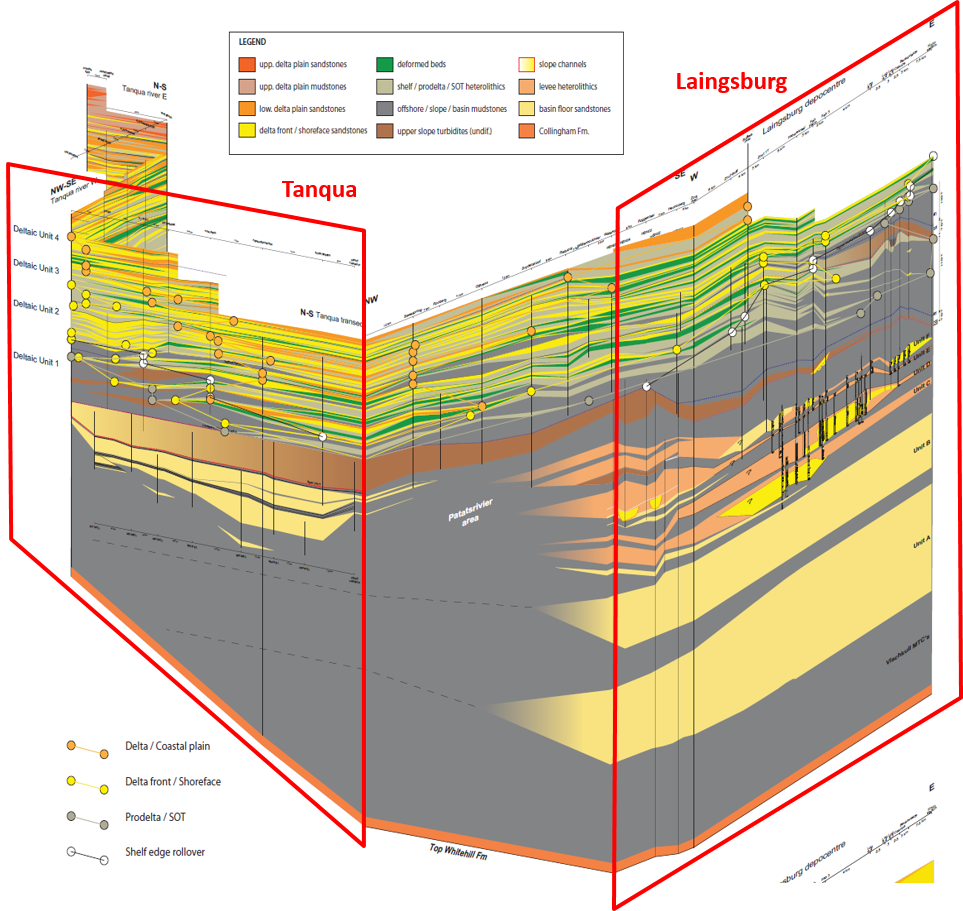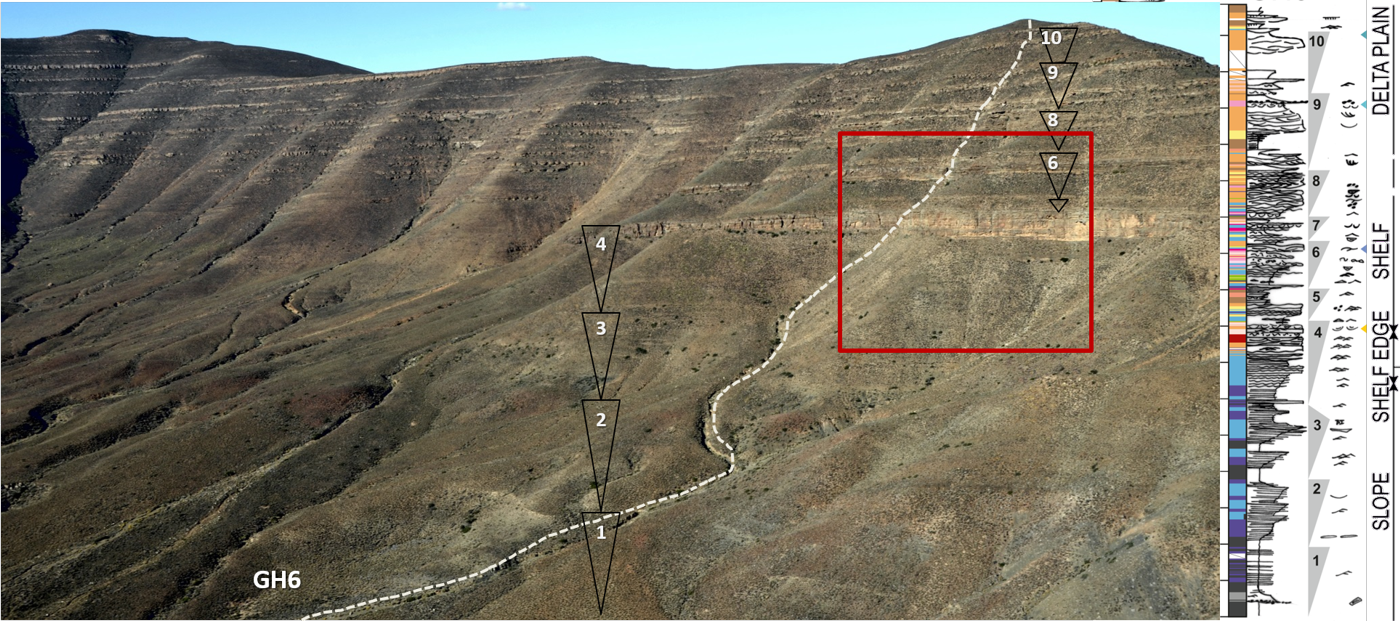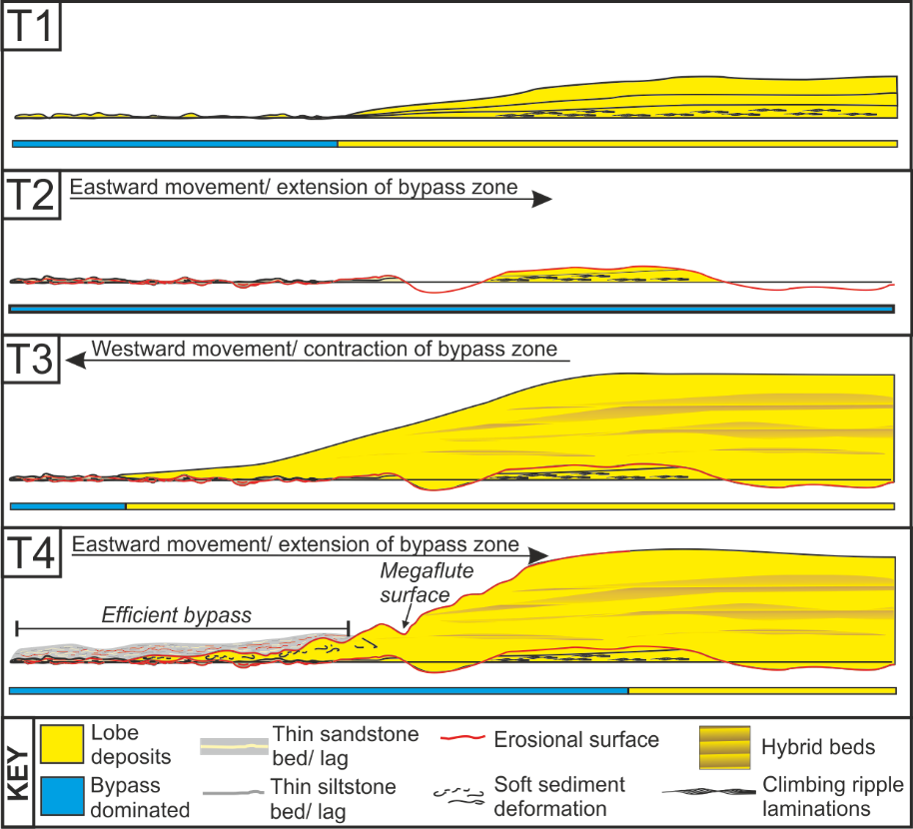Slope Phase 4
A very successful field campaign centred on the Laingsburg and Tanqua depocentres was conducted over the 3 years of the project. The major findings of this work are summarised below including links to relevant publications.
Shelf margin variability in fine-grained prograding systems
Work continued the extensive Waterford Formation correlations built by Jones et al (2015) during Slope Phase 3. A framework was established that, for the first time, linked the Tanqua and Laingsburg depocentres of the Karoo Basin. Analysis of facies variation through the long distance correlations developed concepts of sediment mobility and deposition during progradation of fine grained clastic margins (by Poyatos-Moré et al, 2016) and 2019).

Facies analysis and architecture of an unstable shelf edge rollover
Regional scale correlation on the 600 m thick Waterford Formation across the Tanqua depocentre posed a demanding project. Luz Gomis Cartesio completed this work, augmenting the large scale understanding with detailed work in a number of areas of interest. The major findings were based around the identification and correlation of a shelf edge succession which documents phases of degradation and aggradation/ progradation on the shelf and upper slope ( Gomis et al, 2017) and 2018).

Evolution of the deep-water Laingsburg slope profile and the response of sediment transport and deposition.
Hannah Brooks investigated Laingsburg and Fort Brown Formations across the Laingsburg depocentre. By using the detailed correlation framework established during Slope Phases 1 to 3, Hannah was able to map out the pinch outs of sedimentary bodies in slope and basin floor localities. The work furthered understanding of presence and nature of dynamic and/or static topography on deep water slopes and the response of sedimentary systems.
The key findings of this part of Slope 4 are the evolution of a stepped slope profile (Brooks et al, 2018c)) and the dynamics of the Channel-Lobe-Transition-Zone (Brooks et al, 2018b). Work was also completed on the degradation of slope successions through slumping and subsequent backfill (Brooks et al, 2018a))

